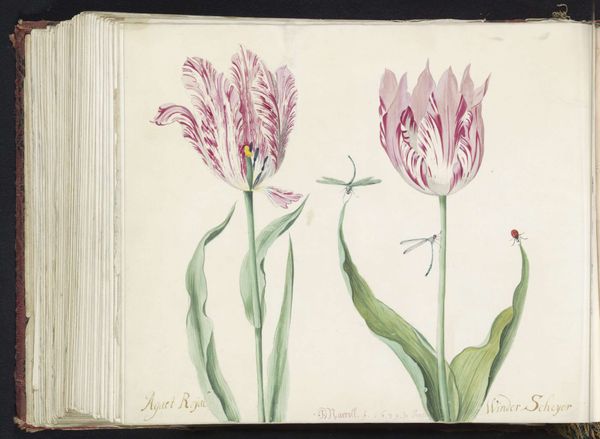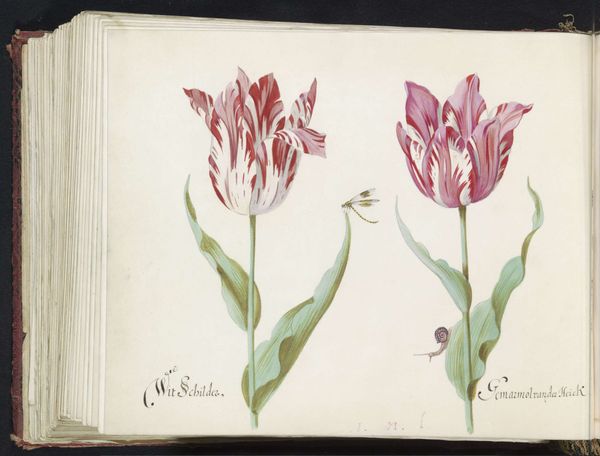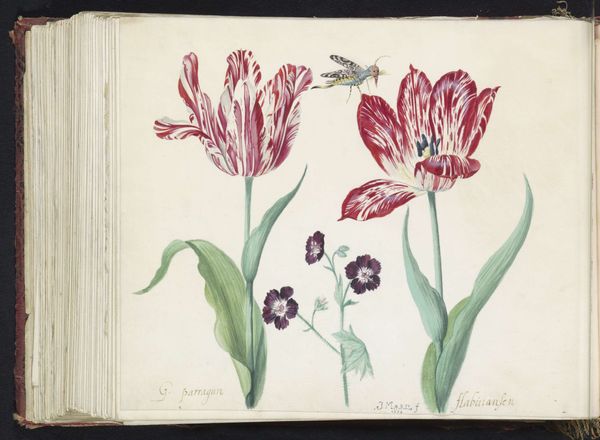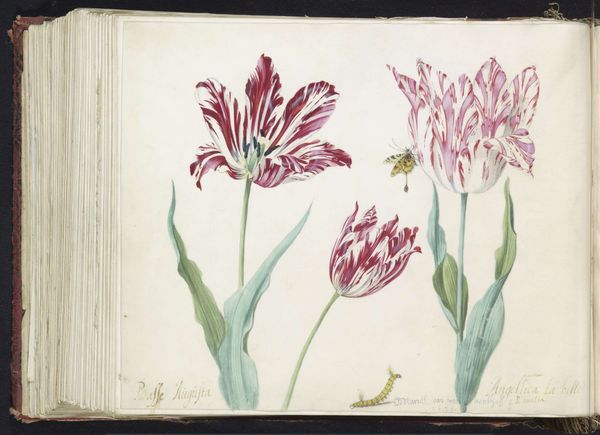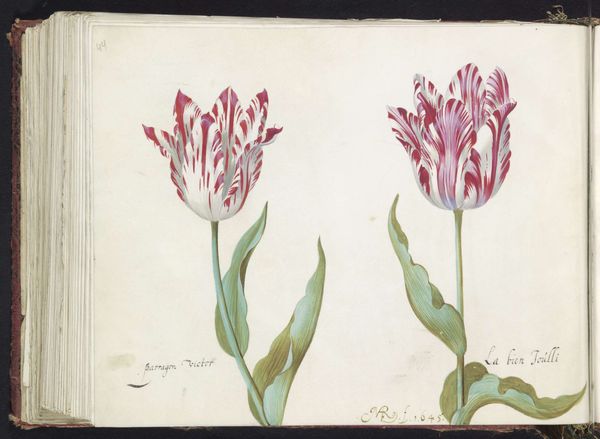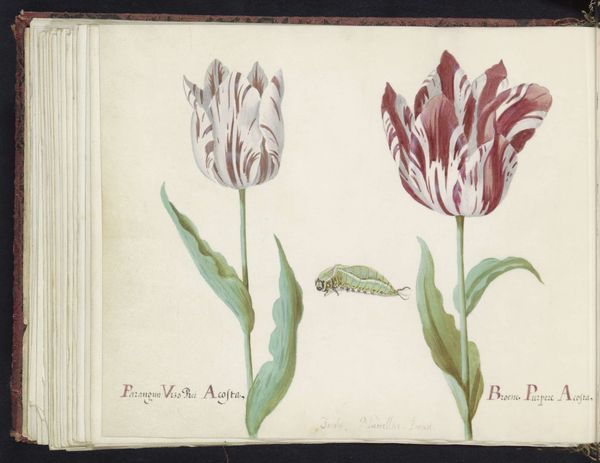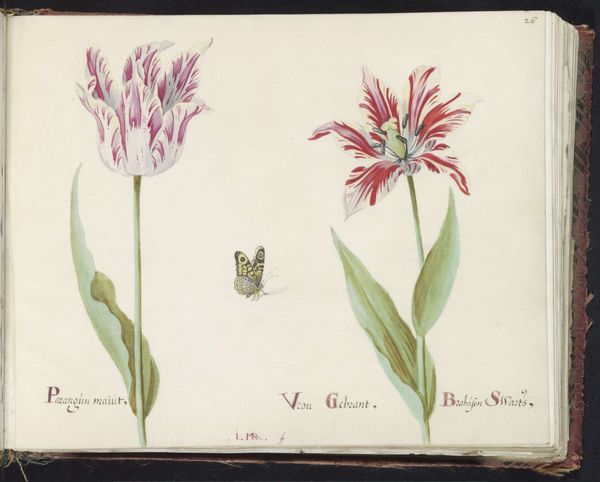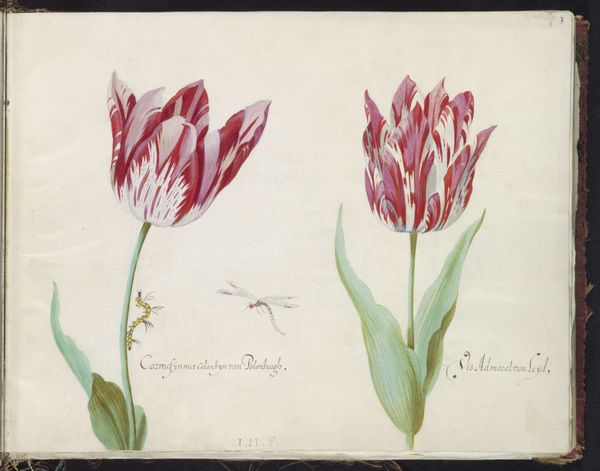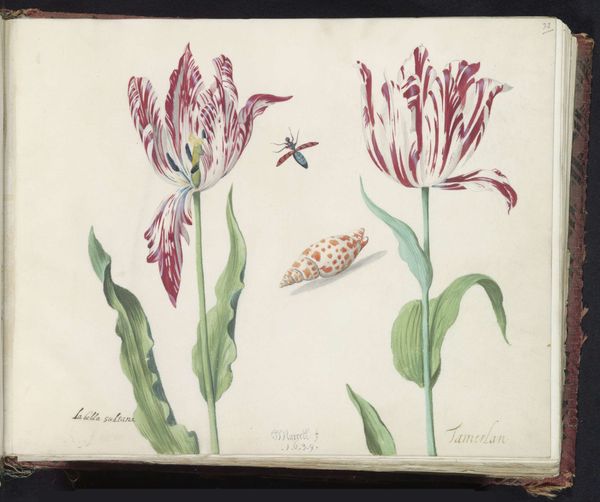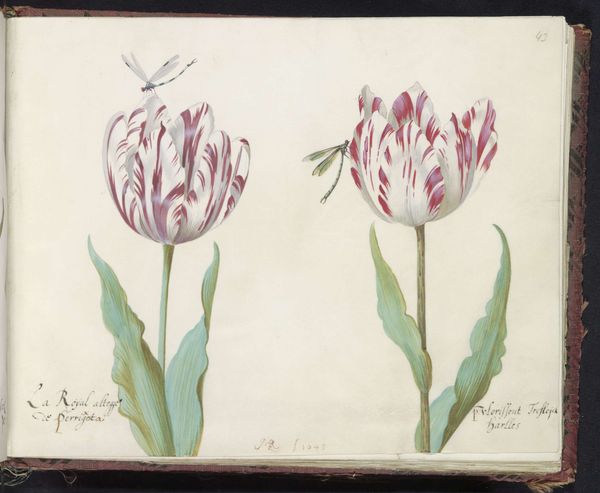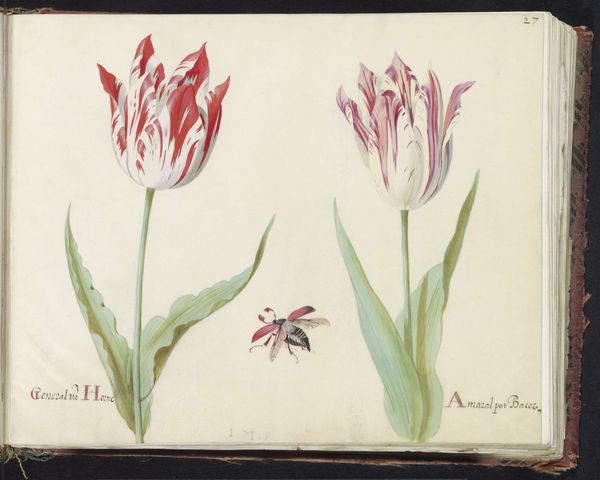
painting, watercolor
#
dutch-golden-age
#
painting
#
figuration
#
watercolor
#
coloured pencil
#
botanical art
#
watercolor
Dimensions: height 265 mm, width 335 mm
Copyright: Rijks Museum: Open Domain
Editor: Here we have Jacob Marrel’s "Two Tulips with a Dragonfly," painted in watercolor around 1637. It's quite a simple composition, and yet the tulips themselves are so striking! How do you interpret this work? Curator: Well, these tulips aren't just pretty flowers, they’re potent symbols embedded in a specific historical moment. The 17th century Dutch tulip mania wasn’t just about aesthetics, it was about social stratification, speculation, and the fleeting nature of value itself. Editor: So the tulips are almost a stand-in for economic and social anxieties? Curator: Precisely. Consider the titles given to the tulips: 'Bewaer van Leide' and 'La Bella Sultana'. These are declarations of status, wealth, and perhaps even an aspirational reach towards exoticism. The dragonfly adds another layer, a symbol of transience mirroring the volatile tulip market. What does it suggest to you about access and social privilege? Editor: That's a fascinating point. The ephemeral dragonfly does seem to highlight how fleeting beauty, or in this case, wealth, can be. So, Marrel isn't simply capturing the likeness of a flower but also commenting on the socio-economic landscape. Curator: Exactly! And we need to consider how access to these commodities reflects power dynamics. Art then, like now, reflects not just beauty but the structural inequalities of its time. Understanding this enriches our experience of the work beyond mere appreciation. Editor: I’m beginning to see how this image resonates beyond its visual appeal. It seems there's a complex story embedded in these simple watercolor strokes. Curator: Absolutely. Art allows us to see the intersectional aspects of nature, wealth, and social dynamics throughout history. What might these flowers represent in today’s socioeconomic climate, I wonder?
Comments
No comments
Be the first to comment and join the conversation on the ultimate creative platform.
